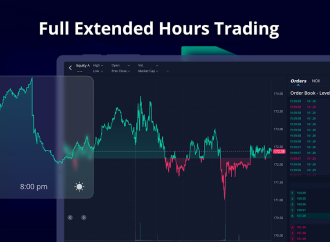In a world where economic uncertainties loom large, banking crises have become all too common. During these tumultuous times, it’s essential to have a robust financial system that can mitigate risks and ensure stability. In this regard, dollar liquidity measures play a crucial role in safeguarding the economy against potential shocks. So, what exactly are
In a world where economic uncertainties loom large, banking crises have become all too common. During these tumultuous times, it’s essential to have a robust financial system that can mitigate risks and ensure stability. In this regard, dollar liquidity measures play a crucial role in safeguarding the economy against potential shocks. So, what exactly are these measures, and how do they function? Join us as we explore the critical role of dollar liquidity measures in mitigating risks during a banking crisis.
The role of dollar liquidity measures during a banking crisis
In times of banking crisis, the dollar liquidity measures put in place by the Federal Reserve can help to mitigate risks and stabilize the financial system. These measures provide banks with access to funding in order to meet their obligations and help to ensure that lending activities can continue. By providing this stability, the Fed can help to prevent a further deterioration of the financial system and promote economic growth.
The different types of dollar liquidity measures
Different types of dollar liquidity measures play different roles in mitigating risks during a banking crisis. The main types of dollar liquidity measures are:
-Asset management:Asset management is the process of identifying, measuring, and managing risk within an organization. It includes the creation and maintenance of a risk management plan that outlines the organization’s approach to risk management.
-Liability management:Liability management is the process of managing a company’s financial exposure to potential losses. It involves identifying, measuring, and managing risks associated with the company’s liabilities.
-Capital management:Capital management is the process of managing a company’s capital structure. It includes the identification, measurement, and management of risks associated with the company’s capital.
-Contingency planning:Contingency planning is the process of preparing for and responding to events that could disrupt normal operations. It includes the development of plans and procedures for dealing with disruptions, as well as the identification of resources that would be needed to carry out those plans.
The efficacy of dollar liquidity measures in mitigating risks during a banking crisis
Dollar liquidity measures refer to the actions taken by the US Federal Reserve to provide US dollars to foreign banks during a banking crisis. The efficacy of these measures has been debated by economists and policy makers for years.
There are three main arguments for why dollar liquidity measures are effective in mitigating risks during a banking crisis:
1) Dollar liquidity measures help to stabilize the banking system by providing foreign banks with the US dollars they need to meet their obligations. This stabilizes the banking system and helps to prevent a financial collapse.
2) Dollar liquidity measures help to avoid a sharp decline in the value of the US dollar. A sharp decline in the value of the dollar would lead to inflation and could cause economic chaos.
3) Dollar liquidity measures help to promote global economic growth. By providing foreign banks with US dollars, the Federal Reserve is effectively increasing the money supply in those countries. This increase in money supply can help to stimulate economic growth.
Critics of dollar liquidity measures argue that they can actually lead to more problems than they solve. They argue that by injecting US dollars into foreign economies, the Federal Reserve is effectively propping up failing banks and businesses. This can lead to moral hazard, where people and businesses take on more risk than they would otherwise because they know that the government will bail them out if things go wrong. Additionally, critics argue that dollar liquidity measures can lead to inflationary pressures in beneficiary countries as their money supply increases.
Conclusion
Dollar liquidity measures have proven to be an effective tool for both public and private sector stakeholders in mitigating risks during a banking crisis. By providing central banks with flexibility, dollars can help stabilize markets and provide the necessary capital cushion needed to protect against unexpected shocks. As more countries move towards a globalized financial system, it is important that proper dollar liquidity measures are put into place so as to ensure stability and prevent negative consequences from occurring. With careful implementation of these measures, we can ensure that our financial systems remain secure during any future economic downturns or banking crises.





















Leave a Comment
Your email address will not be published. Required fields are marked with *